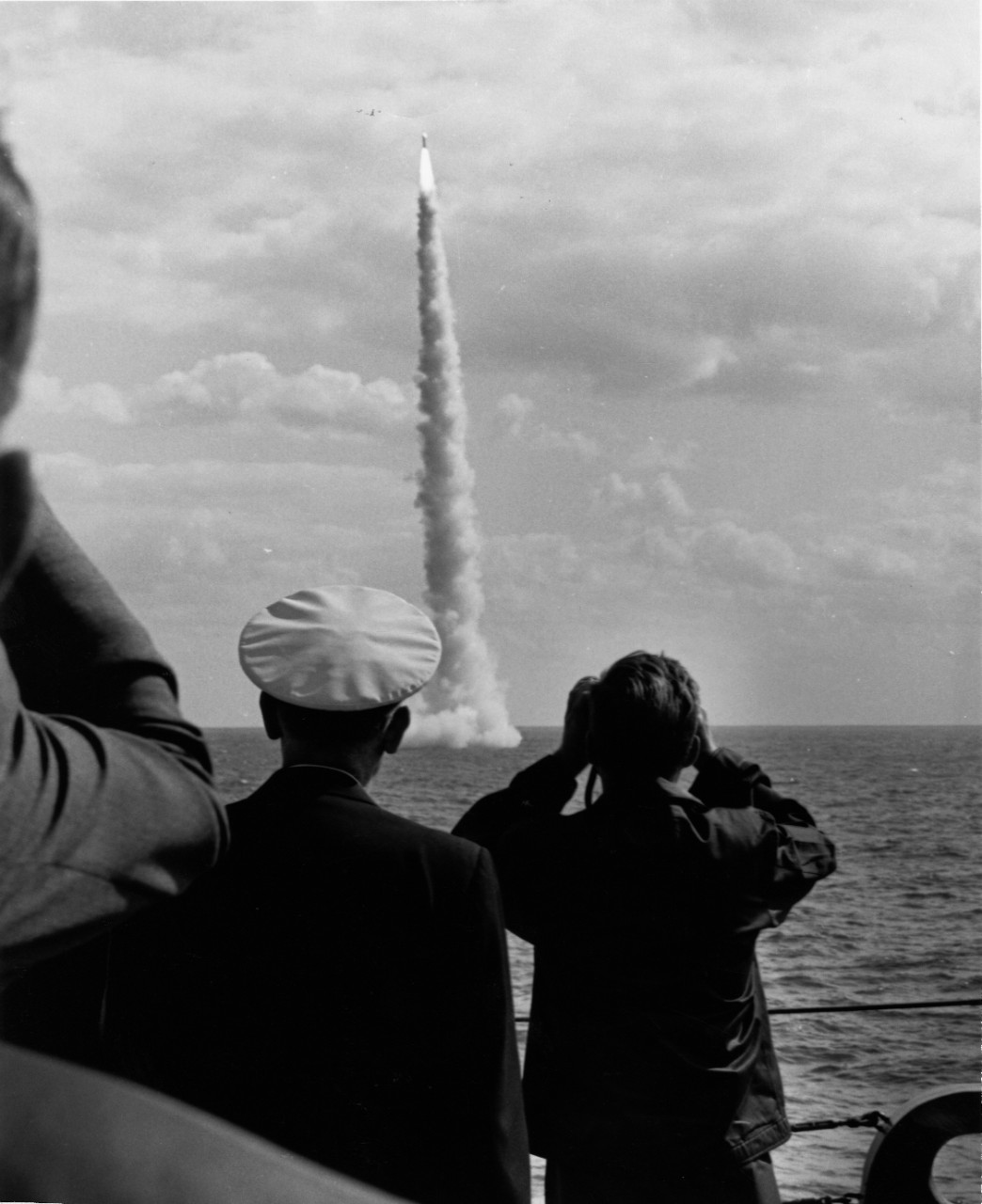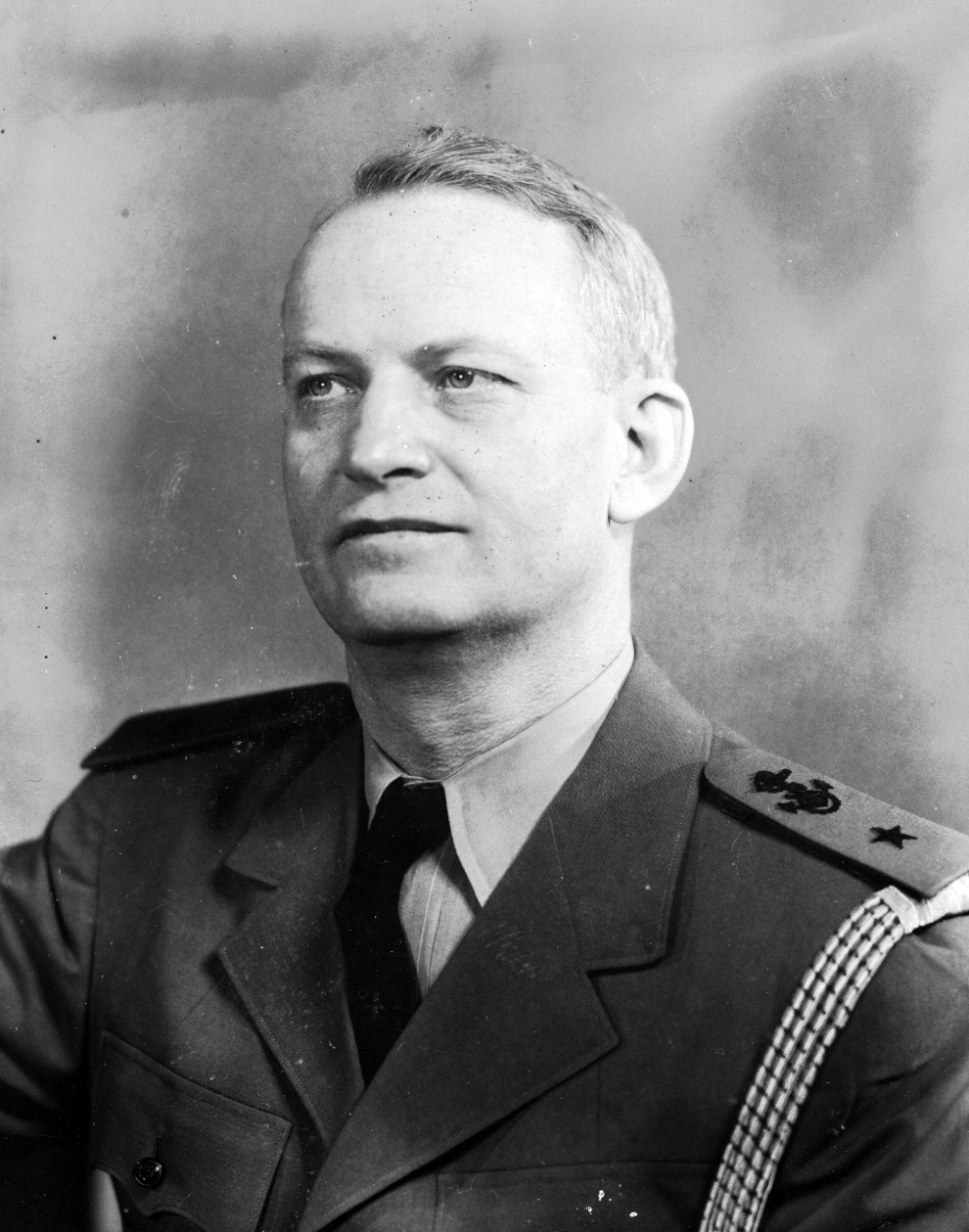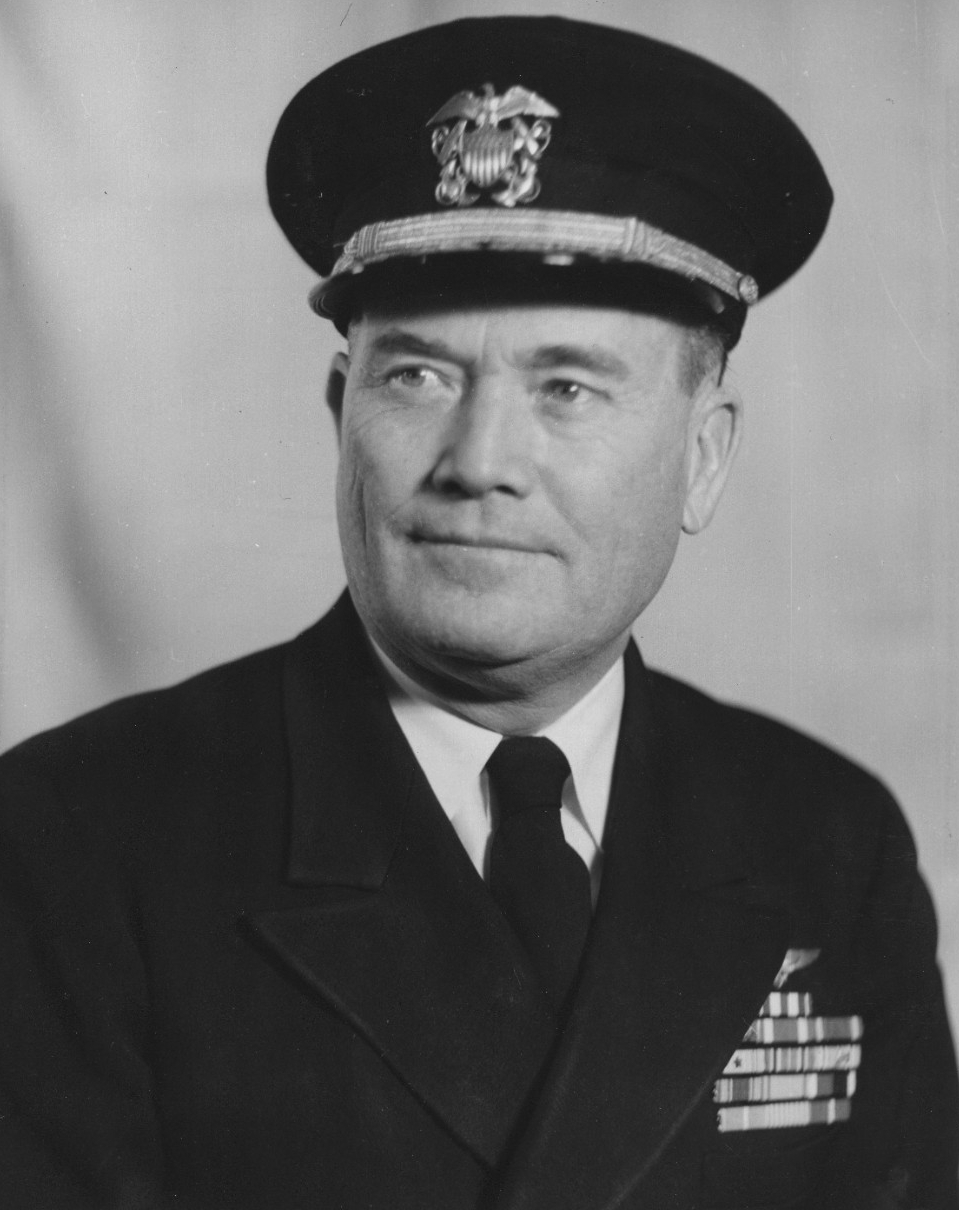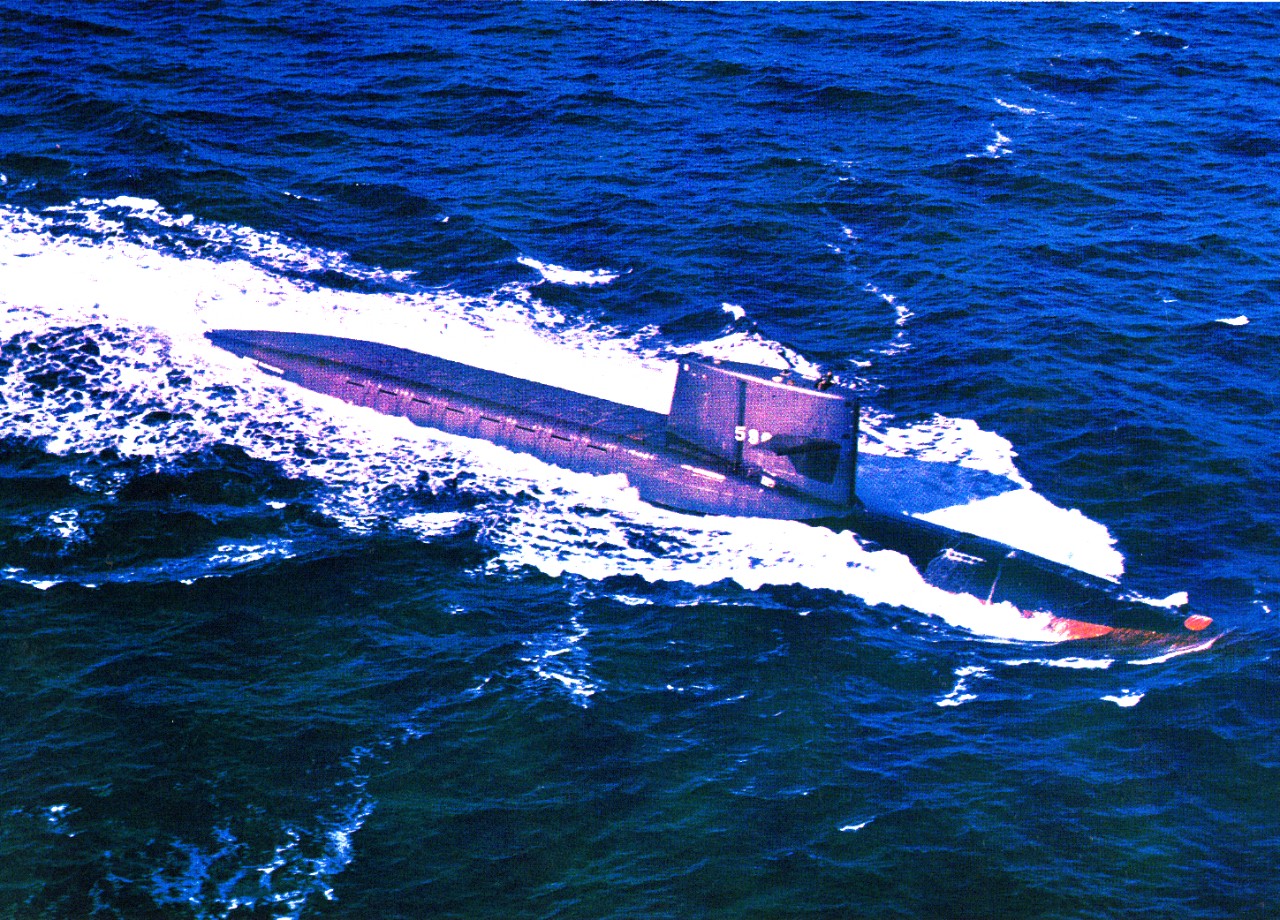Selling a Strategy: Acquiring a New Role and Paying for It
The views expressed are those of the author and do not reflect the official policy or position of the Department of the Navy, Department of Defense, or the U.S. government.
All American armed services need support to extend their capabilities in fresh directions without robbing other functions of resources. Gaining backing for such new programs is comparatively rare and means developing a strategic vision to “sell” policymakers on the capability’s importance. Such so-called national programs must not be seen as expanding existing roles, but rather as innovations. Thereafter, this concept must be sold to build political viability.[1] That selling means it must be transmitted to political leaders by service representatives and outside advocates to show the value of the new capability. Finally, proponents of national capabilities must cautiously accept promises, since political realities change in ways unrelated to armed services’ needs. Such shifts can undermine support for innovation and resources, meaning programs must be insulated from them to receive sustained funding.
The example here examines the building of the U.S. Navy’s Polaris ballistic missile submarine force using interactions on two levels: first, how United States government policymakers selected a new military capability, and second, how the military paid for it. The paper will consider how the Navy submarine force added the ballistic missile to its capabilities in the late 1950s, and how it funded the addition of this system to its arsenal. The case study allows readers to ascertain how to argue for a new capability and at the same time pay for it.
Ordinarily, the friction between equipping and running military forces is seen as a choice between paying to invest in new capabilities (acquisition) or using existing forces (operations and maintenance).[2] When military forces are sent far from home, such as the forward-deployed U.S. Navy, governments must devote more resources to support them.[3] A further wrinkle needs inclusion in the defense investment equation: there is never enough money to satisfy all ambitions at once.[4] This problem of robbing Peter to pay Paul is difficult to solve since the acquisition process for new weapons tends to be drawn out in Congress, increasing their price.[5] In short, a strategic vision is essential to gain national funds either to buy technologically innovative systems or to provide a war reserve force.
Following World War II, the Navy sought new ways to play a role in strategic deterrence. Integrating submarines with guided missiles promised to deliver dramatically new capabilities.[6] In particular, nuclear-equipped submarines could deploy immense striking power quickly, from the safety of the open ocean, for a sustained period of time. After testing the surface-launched Loon missile, an experimental guided weapon derived from the German V-1 buzz bomb, American submariners began assessing the speedier Regulus I in February 1950.[7] Deployment of this nuclear-tipped cruise missile promised to give submariners a deterrent role against their most likely future opponent, the Soviet Union.[8] Successful tests led to deploying three submarines equipped with nuclear Regulus missiles for five years, beginning on board Grayback (SSG-574) in 1959.[9]
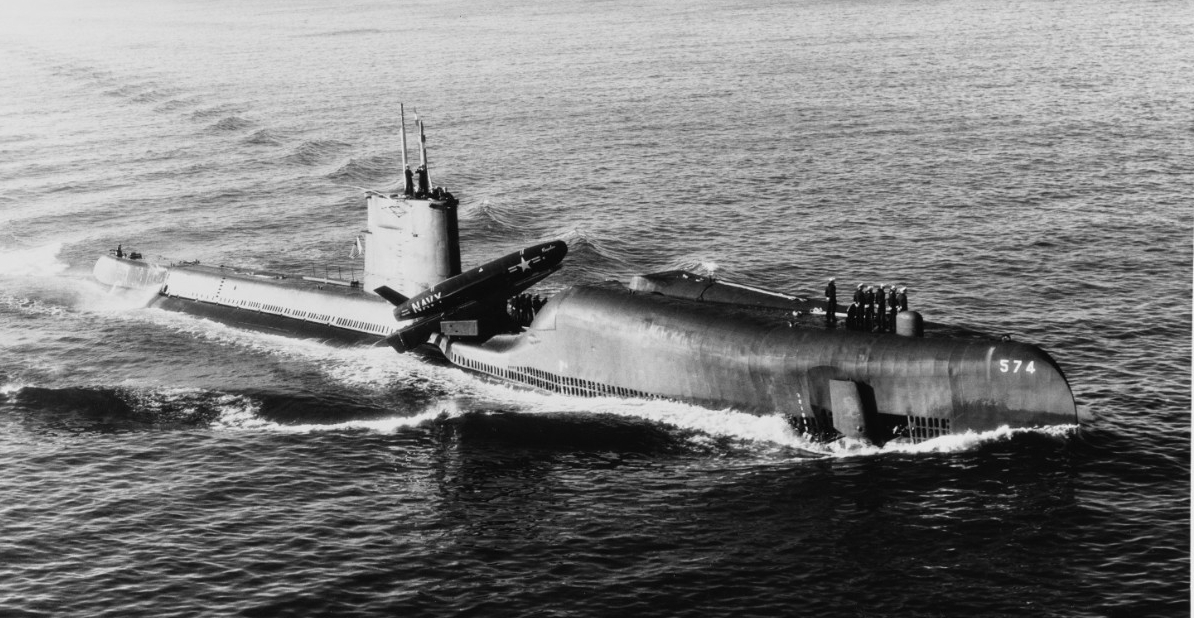
Grayback (SSG-574) enters San Diego harbor with Regulus I missile on deck, 12 December 1958. (NHHC USN 1040764)
Positioning Regulus on board Navy submarines proved an interim step before developing intermediate-range ballistic missiles (IRBM). The nuclear deterrent strength of the Navy would have greater credibility, and survivability, if the weapons moved from exposed aircraft carriers and Regulus boats, which had to surface to fire, to submerged submarines.[10] Between 1955 and 1961 the Chief of Naval Operations, Admiral Arleigh Burke, made developing such a system the keynote of his years as the Navy’s senior officer.[11] At a time when the U.S. Army, Air Force, and Navy vied for the resources to build the American nuclear deterrent, Burke’s fixed and effective voice as the head of the Navy allowed him to establish a new capability for his branch of the armed forces.
Admiral Burke’s sponsorship proved vital, but did not exist in a vacuum. By early 1955, the chair of the Technologies Capabilities Panel of the President’s Science Advisory Committee, James R. Killian, reported a national need for a sea-based IRBM.[12] The Killian Commission therefore supported the rationale for a sea-based deterrent. Together, Admiral Burke, as a service leader, and the Killian Commission, as an outside entity, created the all-important strategic vision to justify the new weapon. The Navy would convert its existing nuclear deterrent role from the carrier-based airplane, and Regulus, to a ballistic missile based on a submarine. The Killian report reinforced the expressed desire of Navy leadership to acquire such an IRBM capability, and flew in the face of some resistance from the submarine community, which did not yet appreciate its role.[13] With the release of the Killian report, however, a submarine-launched ballistic missile became a national priority.
In an effort to make spending the funds for such a system more palatable, Admiral Burke paired the sea-launched missile with a U.S. Army program to build a similar weapon. Teaming with the Army on the Jupiter missile initially helped secure the congressional funding needed for a submarine project. Unfortunately, the liquid-fueled Army weapon proved impractical for submarine use.[14] Instead, in November 1956, Admiral Burke weighed in, arguing the advantages of a relatively invulnerable submarine-launched missile justified separate development of a solid-fueled weapon.[15] Thereafter, the Navy circumvented the dangers of using liquid-fuel on a submarine by developing a smaller, solid-fueled rocket boosting newer, lighter, thermonuclear weapons.[16] The resulting missile would become known as Polaris.
Admiral Burke believed Polaris should be seen as a national priority, meaning it would receive the talent needed to create it and resources from outside the general Navy budget. The admiral apparently received assurances to that effect from Secretary of Defense Thomas S. Gates.[17] The expectations of the Chief of Naval Operations, however, transpired imperfectly. On one level, the U.S. government followed through on Gates’s commitment. The Eisenhower administration, recognizing the need to deploy another component of its nuclear deterrent, agreed to assign a high level of urgency to the project. As a result, in January 1958, the Department of Defense designated Polaris a so-called Brickbat 01 program, granting it emergency priority for funds.[18]
The Navy assigned missile system development to a newly established Special Projects Office (SPO) headed by Rear Admiral William Raborn. The SPO received first priority in funding and staffing and “was the Navy’s bootstrap effort” to make a strategic missile force.[19] Its expertise let the Navy deploy the interim shorter-ranged Polaris A-1 missile in 1960, fully three years earlier than originally mandated.[20] Indeed Herbert York, director of Defense Research and Engineering in both the Eisenhower and Kennedy administrations, later called Polaris “one of the really well run programs in the Defense Department.”[21] Similarly, a historian hailed it as “one of the great managerial and technical successes of Navy history.”[22] The submarine-launched ballistic missile proved a technical success.
Added funding to pay for Polaris from outside the Navy did not materialize. In July 1956, the SPO first requested $25 million to fund solid propellant research, but received word from the Office of the Secretary of Defense that all money had to be spent as authorized by Congress.[23] The Defense Department Comptroller saw Polaris as simply another weapons system, which could use funds from a duplicative Navy program, the Regulus missile.[24] The funding increase requested by Raborn would therefore come from the Navy’s budget. Worse, all future funding increases for ballistic missiles, an estimated $278 million in fiscal year 1958 and $650 million in fiscal year 1959, would come from the service as well. Finally, Brickbat 01 priority authorized Raborn to tax the funds Polaris needed from the Navy’s research and development, ordnance procurement, shipbuilding and conversion, and military construction budgets.[25] In doing its job, the SPO inexorably consumed these four accounts’ resources.
The cost for creating Polaris, and building 41 submarines to carry it, proved high. One analyst suggested the full program took a total of $11.175 billion in funds between 1955 and 1967, out of total Navy appropriations of $164.878 billion in that period, or roughly 6.7 percent of the service’s budgets.[26] However, the weapon’s deployment had greater influence than those numbers suggest, for it absorbed fully 97 percent of Navy base budget growth between fiscal years 1956 and 1961. These budget increases were the new funds the service would have otherwise paid for service growth, pay increases, and inflation.[27] Therefore, to pay for part of Polaris, the Navy cancelled its Regulus and Triton missiles, as well as the Seamaster seaplane program.
Another impact of the program’s cost emerged in shipbuilding. Between fiscal years 1951 and 1957, the Navy began work on six aircraft carriers, 52 surface combatants, and 22 attack submarines, plus three Regulus boats. In the next seven years, it contracted for 41 Polaris boats, three aircraft carriers, 61 surface warships, and 31 other submarines, between 1961 and 1964, buying more than 10 nuclear submarines annually.[28] Nevertheless, by 1957 many Navy ships were at the halfway point of their service lives, forcing upward maintenance costs. Ship components, especially weapons and sensors, rose in price, too, further slowing construction.[29] Ultimately, shipbuilding after 1957 proved lower than the minimum needed to keep the fleet at its 1950s strength, and the active Navy fleet dropped from 967 ships in July 1957 to 812 ships by July 1960.[30]
Cutting personnel also showed the Polaris impact on the Navy budget. Between fiscal years 1951 and 1957, Navy active duty strength declined:
1951 736,596
1952 824,265
1953 794,440
1954 725,720
1955 660,695
1956 669,925
1957 676,071
The last four years represented the reduction in the Navy’s size after the Korean War, and would have saved money. However, the last half of the next seven years saw a partial reversal:
1958 639,942
1959 625,661
1960 616,987
1961 626,223
1962 664,212
1963 663,897
1964 665,969[31]
The force structure tradeoff lasted through 1961. Chief of Naval Operations Burke cut Sailors, in part to pay for creating the Polaris force. His successor did restore personnel strength, but the submarine-launched ballistic missile force absorbed some in return as each boat needed two crews (Blue and Gold) to maximize their availability: a Polaris boat needed up to 300 percent of the officers of a diesel-powered Barbel-class submarine.[32] On the horizon lay another demand for still further naval personnel and operational expense.
After 1964, Vietnam War spending consumed more Defense Department money, preventing any makeup of the shipbuilding deficit. Compounding the Navy challenge, most World War II–built submarines faced the end of their service lives by 1958, since hulls were theoretically limited to just 13 years.[33] The Navy struggled to replace them, so that in 1968 its nuclear program manager, Vice Admiral Hyman Rickover, announced that two-thirds of American attack submarines were holdovers from World War II.[34] Finally, anecdotal evidence also suggests the Navy halted developing other weapons and tightened maintenance funding to pay for the subsurface nuclear deterrent.[35] Deploying Polaris, a new strategic program, robbed the Navy of a part of its general budget.
The Navy essentially paid for the Polaris missiles by shifting budget money and using its investment accounts to buy the new boats. What compelled the service to do so? The Navy’s position, as enunciated by Admiral Burke, regarded the submarine-launched IRBM as “a national program, not a Navy program.”[36] Burke’s logic was that since the service was creating a strategic capability essential to national defense, it should be funded as an additional program. The last point was critiqued in 1971 by two defense analysts, veterans of the 1960s-era Department of Defense, who wrote:
By this was meant: the Polaris mission is not a traditional Navy mission and therefore should not be financed out of the Navy’s share of the defense budget . . . a cutback in Air Force bomber procurement would have been a more logical choice [instead]. But the fact that Polaris was a more urgent national need than other Navy programs, and that the Navy did not recognize this in its proposed budget, does illustrate the fallacy of budgeting by Service rather than mission.[37]
This quotation’s argument that the Navy did not recognize the importance of Polaris is questionable in light of Admiral Burke’s strong sponsorship of the program. Nor does it invalidate the principle of outside funding for national assets.
The quotation also suggests a collateral point. If a military service requests funds for divergent missions each must serve a well-defined strategic role, or it will lose to more urgent purchases. This is what happened in the late 1950s and 1960s, when the good case for building Polaris gained Brickbat-01 national priority while absorbing the rest of the Navy’s resources. The Navy already had a strategic nuclear mission, met by the Regulus missiles and carrier-borne strike aircraft.[38] Polaris appreciably widened Navy capabilities, not its tasks. Buying ballistic missile submarines changed the delivery vehicle, not strategic role, robbing other service elements of funding. In essence other parts of the sea service paid for Polaris because the Navy could not provide a distinctive enough strategic case to defend those parts of its budget.
In terms of U.S. Navy and American government goals, to deliver a survivable nuclear deterrent able to operate continuously, Polaris succeeded admirably.[39] It even retained a joint role, becoming part of the Single Integrated Operational Plan (SIOP) for strategic nuclear targeting.[40] However, the fiscal conclusion to be drawn from Polaris is that divergence between Navy and national priorities made the federal government unwilling to fund both operating and deterrent forces. Polaris money came out of the Navy’s hide because no one could make a compelling argument for added funds to pay for fleet acquisition and operations. Polaris would not have robbed the rest of the Navy of funds if it had been publicly enunciated as a national strategic investment.
Since the end of World War II, naval programs have faced strong competition for fiscal resources. In the face of that trend, funding new capabilities has proven difficult. Submarine-based ballistic missiles enjoyed joint support only initially, and really only extended an existing mission for the Navy’s nuclear deterrent. Polaris, while very effective, did not have extra-Navy support to secure the national resources to create it. While a guarantee from a political leader should in theory be enough to secure funding for a program, Admiral Burke’s experience with Polaris demonstrates the vulnerability of such an assumption. Even the admiral’s acceptance of a joint approach by partnering with the Army Jupiter program, then incorporating Polaris into the Single Integrated Operational Plan, inadequately ensured funding for the submarine-launched ballistic missile deterrent.
In order, then, to sell national programs to American political leaders, a service must demonstrate a need that will be met by the program, broaden its appeal to include other services if possible, and provide a distinct, even unique, and preferably joint, strategic vision for that program. Most importantly, it must also secure civilian intellectual support to justify the addition of a new capability. Taking anything less than these steps risks the financing of existing programs, in effect compelling armed services to pay for new roles on their own.
─Randy Papadopoulos, Ph.D., Navy Secretariat Historian, March 2021
_______________________________________________
[1] Samuel Huntington, “National Policy for the Transoceanic Navy,” US Naval Institute Proceedings (May 1954).
[2] Linda Cavalluzzo, Optempo and Training Effectiveness (Washington, DC: Center for Naval Analyses, December 1984), 3. See also Joseph Bouchard, Command in Crisis: Four Case Studies (New York: Columbia University Press, 1991), xxx-xxxiii.
[3] [1] Daniel Gouré and Dewey Mauldin, eds., Naval Forward Presence, Present Status, Future Prospects. A Report on the CSIS Conference on Naval Forward Presence (Washington, DC: November 1997), xiii. The post–Cold War U.S. Navy responded more frequently than any other American service to crises, see Adam Siegel, The Use of Naval Forces in the Post-War Era: U.S. Navy and U.S. Marine Corps Crisis Response Activity, 1946–1990 (Alexandria: Center for Naval Analyses, February 1991), 14.
[4] George Baer, One Hundred Years of Sea Power (Stanford, CA: Stanford University Press, 1994), 348, 356; Robert Love, History of the U.S. Navy, vol. 2, 1942–1991 (Harrisburg, PA: 1992), 416–417; Edwin Hooper, United States Naval Power in a Changing World (New York: Praeger, 1988), 217.
[5] W. Keller, ed., “The Defense Resource Allocation Process,” (Newport: 1 August 1995), VI-3; Henry Gaffney, A Tutorial on U.S. Defense (Washington, DC: Center for Naval Analyses, 1998), 44.
[6] Gary Weir, Forged in War: The Naval-Industrial Complex and American Submarine Construction, 1940–1961 (Washington, DC: 1993), 227–228.
[7] Weir, 235.
[8] Berend Derk Bruins, “U.S. Naval Bombardment Missiles, 1940–1958: A Study of the Weapons Innovation Process,” (PhD dissertation, George Washington University, 1981), 217–218.
[9] Regulus boats became Grayback, Growler, and Halibut. Friedman, U.S. Submarines, 234; Office of the Chief of Naval Operations, Dictionary of American Naval Fighting Ships, vol. III: G–K (Washington, DC: 1968), 139–140, 167–169, 211–215. The boats carried two versions of the Regulus missile.
[10] Baer, 352.
[11] Baer, 353; Weir, 244.
[12] Harvey Sapolsky, The Polaris System Development: Bureaucratic and Programmatic Success in Government (Cambridge, MA: Harvard University Press 1972), 32; Kenneth Condit, History of the Joint Chiefs of Staff: Volume VI: The Joint Chiefs of Staff and National Policy, 1955–1956 (Washington, DC: 1992), 11.
[13] Sapolsky, 18, 244.
[14] Sapolsky, 21–22.
[15] Condit, 71.
[16] Kreitlein, 105–107.
[17] Baer, 355–356; Dr. Jeffery Barlow (Burke interviewer and former Naval History and Heritage Command historian) in discussion with the author.
[18] Weir, 253.
[19] Thomas Hone and Curtis Utz, History of the Office of the Chief of Naval Operations, 1915–2015 (Washington, DC: Naval History and Heritage Command, 2020), 222–223, https://www.history.navy.mil/research/publications/publications-by-subject/opnav-100.html.
[20] Strategic Systems Program Office, FBM Facts/Chronology: Polaris, Poseidon, Trident (Washington, DC: 1986), 24–27.
[21] Quoted in Graham Spinardi, From Polaris to Trident: The Development of US Fleet Ballistic Missile Technology (Cambridge: Cambridge University Press 1994), 62.
[22] Baer, 359.
[23] Bruins, 293–294.
[24] Bruins, 297.
[25] Bruins, 295–296, footnote 1 on 296. The Navy continued to fight for Polaris money, but failed to get it. See Bruin, 352–354, especially footnote 1, 353.
[26] Sapolsky, 172.
[27] Sapolsky, 173. Total Navy budget increases after 1955 amounted to $4.569 billion, and the service spent $4.409 billion on the Polaris program.
[28] Norman Polmar, The Naval Institute Guide to the Ships and Aircraft of the U.S. Fleet (Annapolis: Naval Institute Press, 2013), Appendix B, 646–647.
[29] Thomas Hone, Power and Change: The Administrative History of the Office of the Chief of Naval Operations, 1946–1986 (Washington, DC: Naval Historical Center, 1989), 52.
[30] David Rosenberg, “Arleigh Albert Burke,” in The Chiefs of Naval Operations, ed. Robert Love (Annapolis: Naval Institute Press, 1980), 295.
[31] “Historic Personnel Strengths of the US Armed Services,” https://www.dmdc.osd.mil/appj/dwp/dwp_reports.jsp.
[32] Mark Hagerott, “Commanding Men and Machines: Admiralship, Technology, and Ideology in the 20th Century U.S. Navy,” (PhD dissertation, University of Maryland, 2008) 273–274, footnote 26.
[33] U.S. Office of Naval Operations, “Annual Report of the Chief of Naval Operations to the Secretary of the Navy, Fiscal Year 1956,” 43. In practice, the Navy operated World War II submarines into the 1960s and allied fleets used them up to 1980.
[34] Nuclear Propulsion Program, Joint Committee on Atomic Energy, 90th Cong., 8 February 1968, 157–158. In 1960, Admiral Hyman Rickover testified that funding a strategic Air Force program compelled the Navy to defer purchasing two nuclear-powered attack submarines. See Review of Progress in the Naval Reactor Program and Developments in the Polaris Missile Submarine System, Joint Committee on Atomic Energy, 86th Cong., 9 April 1960, 27–28.
[35] Love, 382; Sapolsky, 168; Baer, 356; Isenberg, 725.
[36] Alain Enthoven and K. Wayne Smith, How Much is Enough? Shaping the Defense Program, 1961–1969 (New York: Harper and Row, 1971), 17. Emphasis in original.
[37] Ibid.
[38] See Jeffrey Barlow, Revolt of the Admirals: The Fight for Naval Aviation, 1945–1950 (Washington, DC: 1994), 106–107, 126.
[39] For Navy goals see Office of the Chief of Naval Operations, Department of the Navy, NWP 10(A) Naval Warfare (Washington, DC: 1 November 1961), 5–13.
[40] David Rosenberg, “The Origins of Overkill: Nuclear Weapons and American Strategy 1945–1960,” International Security 7, no. 4 (Spring 1983); Byron Fairchild and Walter Poole, History of the Joint Chiefs of Staff. The Joint Chiefs of Staff and National Policy. Volume VII: 1957–1960 (Washington, DC: 2000), 51–54.

